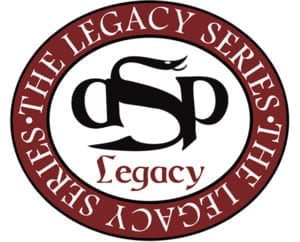Linda Watanabe McFerrin and The Legacy Book: A Look Back
This past week we’ve spent looking at Linda Watanabe McFerrin’s literary breadth; she’s read poetry for us, shared stories from Japan, where she grew up, taken us to the world of Namako: Sea Cucumber, served us a sensual Italian feast in English, and guided us through the streets of her own home, San Francisco.
In a lot of ways we’ve been looking back on these wonderful pieces by Linda, pulling them from piles and old publications–from a harddrive or two perhaps. After all, a Legacy book is designed to be backwards-looking. That is: it’s contents are hard-to-find pieces of art from authors who have had a historied career of publishing with indie presses and in indie anthologies; that is: it is a collection. But, in saying so, we have only described its foundation, not its function. And, for the final day of Linda Watanabe McFerrin week, let’s excite ourselves by pondering the newness of her Legacy book.
The Legacy book is making the old into the new. Famed modernist poet, Ezra Pound, had a phrase, which itself is a translation from a Confucian philosophy text, “Make it new.” He was obsessed with refabricating old, mostly foreign language, poetry into modern contexts. This is most famously typified with his English translation of a book from the Odyssey at the beginning of his first Canto. By doing so, Pound believed he was reintroducing the thoughts of the past to the context of the present in a way which was literary and trying. Thus, he did not usurp the past by introducing its pantheon to modern work and thereby contextualizing it in a modern frame of reference, but rather breathed new life into it, in homage, as though there were still more and more to learn, signifying not a lack of thought in the historical works–that they had not discovered imagism, that the great authors of old were too transfixed on form–but that the modern world has not given enough thought to the past.
When we bind a Legacy book, the paper is supreme, thick, does not smudge nor break away, the folds are heavy and give off a polished shine, the blurbs on the back, quotes from Pinsky or Dirda (or in the case of Other Voices, Other Lives, the poem) are new, the ink just having dried, the covers, too, are new, original designs by the incredible Randy Stanard. But the originality doesn’t stop at superficials, the ordering is new–The Richard Peabody Reader is noted for its unique categorization, where rather than chronological ordering, or by period, or by style, each section is introduced by theme, like “family” or “love.” And, indeed, even further, there are many parts of these Legacy books which are new to the reader. Again, in the Peabody Reader, there is a phenomenal novella in the back which had not previously been published.
 All of these small details, and the collection as a whole, the merging of works never before placed cheek to cheek, is inextricably new. So, when we say “Linda Watanabe McFerrin has a Legacy book coming out in Autumn of 2019” we mean she has an old work made completely new, contextualized in itself, beautified for a reading experience which is not encyclopedic nor prescriptive in its presentation of a career, but utterly unique in how it is read. Legacy books are collected not just as chronicles, though they do chronicle, but as books, experiences in themselves, new.
All of these small details, and the collection as a whole, the merging of works never before placed cheek to cheek, is inextricably new. So, when we say “Linda Watanabe McFerrin has a Legacy book coming out in Autumn of 2019” we mean she has an old work made completely new, contextualized in itself, beautified for a reading experience which is not encyclopedic nor prescriptive in its presentation of a career, but utterly unique in how it is read. Legacy books are collected not just as chronicles, though they do chronicle, but as books, experiences in themselves, new.
Linda Watanabe Mcferrin’s new book with ASP is due to release in the Fall of 2019.
Here is a list of her readings we have featured in the last week:
Sakura no Sono Sakura no Sono
Noche de Los Muertos Noche de los Muertos
From Namako: Sea Cucumber From Namako: Sea Cucumber
Speaking in Tongues Speaking in Tongues
On Pleasures Oral On Pleasures Oral
Listen to Linda on the ASP Podcast